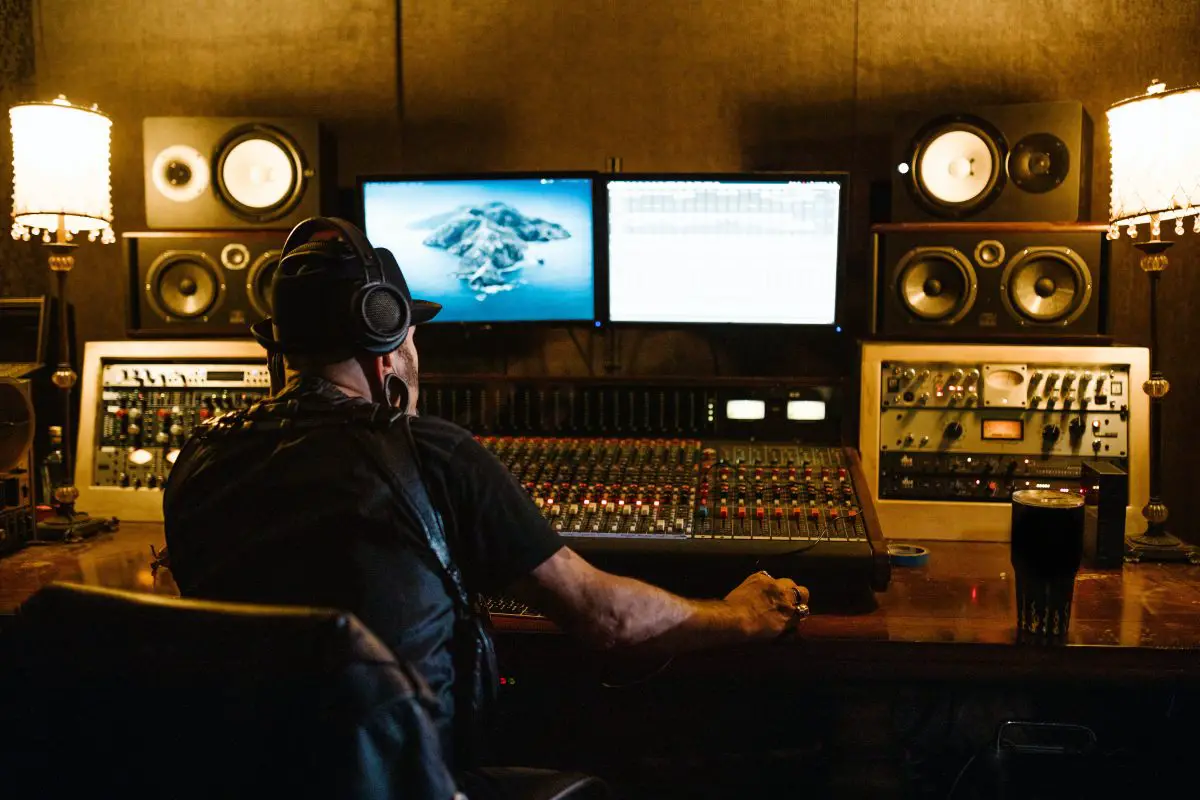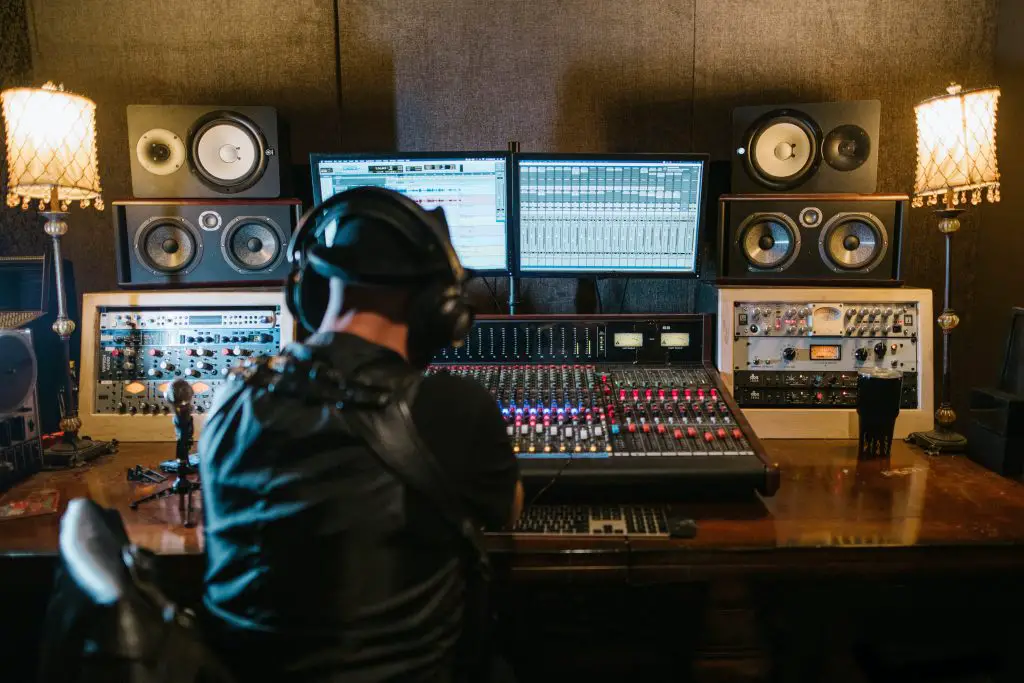Ducking into the world of audio, my friends! Have you ever listened to a podcast or watched a video where the music suddenly drops in volume just as someone begins to speak? That’s no quacking accident – it’s a technique called “ducking” in audio. Intrigued? Let’s dive into the depths of this magical audio-engineering trick- ducking!
In this blog post, we’ll explore the wondrous world of audio ducking – from its purpose in audio production to the nitty-gritty of sidechain compression. We’ll also uncover popular tools and software that will have you ducking like a pro in no time as well as reveal essential tips and best practices to ensure your audio projects achieve the perfect balance.
What is ducking in audio? Ducking is an audio engineering technique that automatically reduces the volume of a specific audio source, such as background music, when another audio source, like a vocal track, is present. This method enhances clarity and ensures that the primary audio stands out in the mix.
What is audio ducking, and how does it work?
Audio ducking is a technique used in audio engineering that automatically lowers the volume of one audio source, such as background music, when another audio source, like vocals or dialogue, is present. This helps to enhance clarity and ensures that the primary audio stands out in the mix.

Ducking works in audio through a process called sidechain compression. This involves linking the compressor of one audio source (e.g., music) to another audio source (e.g., vocals) so that when the second source is active, the volume of the first source is reduced. The process involves setting threshold, attack, and release settings to control the extent and speed of the volume reduction.
By applying to duck to different audio sources, you can create a balanced and clear mix in various audio projects, such as podcasts, radio shows, and music production.
AKAI Professional MPK Mini MK3

AKAI Professional MPK Mini MK3
Common uses of ducking in audio
Ducking is a powerful audio engineering technique that has a wide range of applications in various audio projects. Let’s explore the common uses of ducking in audio, so you can start implementing this technique in your projects and achieve professional-sounding results.
1. Podcasts and radio shows
Ducking is commonly used in podcasts and radio shows to maintain clarity by lowering background music or sound effects when a host or guest is speaking.
2. Film and video production
In films and videos, ducking helps create a good balance between dialogue, music, and sound effects, allowing viewers to focus on the story and won’t be overpowered by background sounds.
3. Music production
Ducking is employed in music production to create space for vocals by reducing the volume of competing instruments or backing tracks when the main vocal is present. This technique ensures that the singer’s voice stands out and remains the focal point of the track.
4. Live broadcasting
In live radio or television broadcasts, ducking can be used to automatically lower the volume of background music or sound effects during live interviews, news reports, or other spoken segments, ensuring that the primary audio is clear and easily audible.
5. Audio narration
When adding voiceovers or narrations to educational materials, presentations, or commercials, ducking can help balance the background music or sound effects with the narrator’s voice, making the content more engaging and easier to comprehend.

What are the techniques used in audio ducking?
Ducking is a widely used technique in audio production to temporarily lower the volume of one audio source to make room for another. It is commonly employed in scenarios where speech or vocals need to be heard clearly over background music or sound effects. This table presents a comparison of different ducking techniques, showcasing their features, advantages, and limitations.
| Technique | Description | Pros | Cons |
|---|---|---|---|
| Sidechain | Uses a trigger source to control the ducking | Precise control over ducking effect | Requires a sidechain-capable plugin |
| Automated | Relies on algorithms to detect audio dynamics | No manual setup required | May produce false positives or negatives |
| Manual | Adjusts the volume manually during production | Complete control over ducking effect | Time-consuming and requires expertise |
| Multiband | Applies ducking selectively across frequency bands | Targeted volume reduction | Complex setup and may introduce artifacts |
Whether you prefer the precision of sidechain, the convenience of automated algorithms, or the manual control of volume adjustments, each technique offers its own set of benefits and drawbacks. By understanding the characteristics of these techniques, audio engineers and producers can make informed decisions when implementing ducking in their projects.
What tools and software can you use for ducking in audio?
There are several tools and software available for implementing ducking in audio projects, including:
1. Hardware compressors
Hardware compressors are dedicated audio processing units that can be used for ducking in audio. They can provide high-quality sound processing and greater flexibility in adjusting threshold, attack, and release settings.
The choice of tools and software for ducking in audio will depend on your specific needs and preferences.
2. Digital audio workstations (DAWs) with ducking features
Most digital audio workstations (DAWs), such as Ableton Live, Logic Pro, and FL Studio, include built-in compressor plugins that support sidechain compression, which is necessary for ducking. These features can provide an efficient and easy-to-use solution for implementing ducking in audio projects.
3. Popular ducking plugins
There are several third-party ducking plugins available, such as Waves Vocal Rider, FabFilter Pro-DS, and iZotope Neutron 3, that can help you achieve the perfect ducking effect. These plugins provide additional customization options and can be used with various DAWs.
The choice of tools and software for ducking in audio will depend on your specific needs and preferences. Whether you opt for hardware compressors, built-in DAW plugins, or third-party plugins, mastering the art of ducking can take your audio projects to the next level.
Tips and best practices for using ducking in audio
When using ducking in audio, it’s important to keep in mind the following tips and best practices:
1. Setting appropriate threshold levels
Setting the right threshold level is crucial for achieving the desired ducking effect. It’s important to set the threshold level just below the level of the primary audio source so that the background audio is only reduced when the primary source is active.
2. Choosing the right attack and release times
The attack and release times determine how quickly the compressor reacts to changes in the audio signal. A fast attack time can help preserve the initial transient of the primary source, while a slow release time can help ensure a smooth transition between the primary and background sources.
3. Experimenting with different ducking techniques
There are different ducking techniques you can use to achieve different results, such as using multiple compressors, EQing the background audio, or adjusting the ratio of the compressor. It’s important to experiment with these techniques to find the one that works best for your specific project.
By implementing these tips and best practices, you can create a more balanced and clear mix in your audio projects, ensuring that every sound stands out in its own spotlight.
Conclusion
Well, folks, we’ve certainly taken a quack at understanding the delightful art of audio ducking! Did our feathery friend help you wrap your head around this essential audio technique? And did I cover everything you wanted to know? Let me know in the comments section below (I read and reply to every comment).
If you found this article helpful, share it with a friend, and check out my full blog for more tips and tricks on audio production. Thanks for reading, and remember to always duck and cover in the audio world – you never know when those volume fluctuations might sneak up on you!
Key takeaways
This article covered what is ducking in audio. Here are some key takeaways:
- Ducking is an audio engineering technique that reduces the volume of one audio source when another audio source is present.
- Sidechain compression is the primary method used to achieve ducking in audio projects.
- Ducking is commonly used in podcasts, radio shows, films, and music production to enhance clarity and balance between audio sources.
- Most digital audio workstations (DAWs) support ducking through built-in compressor plugins or third-party ducking plugins.
- To effectively use ducking, it’s essential to set appropriate threshold levels and choose the right attack and release times.
- Experimenting with different ducking techniques can lead to better audio quality and more engaging projects.















